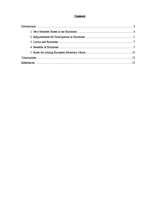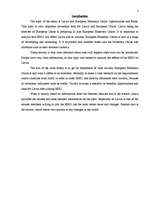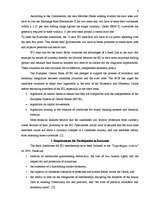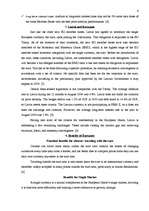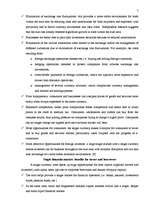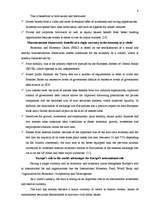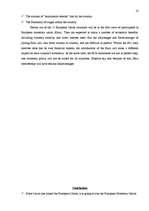-
Latvia and European Monetary Union Opportunities and Risks
| Nr. | Chapter | Page. |
| Introduction | 3 | |
| 1. | New Member States in the Eurozone | 4 |
| 2. | Requirements for Participation in Eurozone | 5 |
| 3. | Latvia and Eurozone | 7 |
| 4. | Benefits of Eurozone | 7 |
| 5. | Risks for joining European Monetary Union | 10 |
| Conclusions | 12 | |
| References | 13 |
On 1 January 1999, eleven EU countries started the eurozone. On that day, the exchange rates of all EMU currencies were irrevocably fixed and the euro was officially introduced as legal currency. In January 2002, euro coins and bank notes are introduced and six months later national currencies disappear.
The UK, Sweden and Denmark decided to stay out of the Eurozone for now, whereas Greece initially did not join because it did not meet the Maastricht criteria. On 1 January 2001, Greece became the 12th country to join the Euro, after it fulfilled all requirements.
All applicants must fulfill a number of formal and substantial conditions before joining the euro:
Maastricht convergence criteria of fiscal stability,
Central Bank independence;
Low inflation and interest rates;
Monetary stability of their currencies by participating in the Exchange Rate Mechanism II (ERM II) for a minimum period of two years.
No restrictions will be placed on the candidate countries' exchange rate policies before entry to the EU. Once they have gained EU membership they will treat the exchange rate as a matter of common interest. Some voices in the EU have warned that premature efforts to join ERM II or the euro area may, however, be harmful both to the candidate countries and to the euro area itself.
Upon accession, the new members will participate in EMU with the status of Member States with derogation from adopting the euro. This status will be granted in the Accession Treaties. During this phase, the new Member States will have to treat their exchange rate policy as a matter of common concern and they are expected to join the exchange rate mechanism, the ERM II.
Once the new Member States reach a high degree of sustainable nominal convergence, which means fulfilling all the Maastricht Treaty convergence criteria, including at least two year participation in the ERM II, they can adopt the euro.
At the same time, the candidates must fulfill the Copenhagen economic criteria. These criteria require them to be functioning market economies, able to cope with competitive pressures and market forces within the Union, by the time of accession. The Commission warns that the candidate countries should not try to meet the convergence criteria prematurely. They should rather concentrate on the structural and economic reform leading to well-functioning market economies.
According to the Commission, the new Member States wishing to enter the euro zone will have to join the Exchange Rate Mechanism II for two years and will have to keep their currencies within a 2.25 per cent trading range against the single currency. Under ERM II, currencies are generally required to trade within a 15 per cent band around a central euro rate.…
1. New Member States in the Eurozone 2. Requirements for Participation in Eurozone 3. Latvia and Eurozone 4. Benefits of Eurozone 5. Risks for joining European Monetary Union

